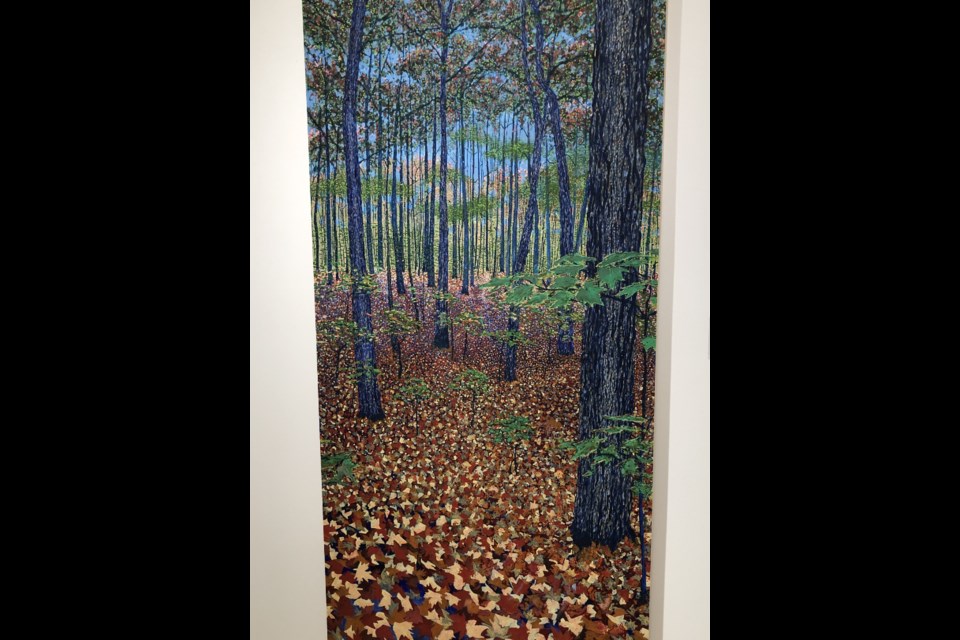MOOSE JAW — The latest exhibition at the Moose Jaw Centre for Arts and Culture (MJCAC) brings the outdoors indoors as artist Darryl Gish showcases a world of intricate details and vibrant landscapes.
“Book of Nature” opened to the public on Nov. 16 and remains in the gallery until Wednesday, Dec. 18. The gallery — located at 217 Main Street North — is open Tuesday to Saturday from noon to 5 p.m.
The MJCAC was formerly known as the Cultural Centre.
According to Gish’s biography, he grew up working on his parents’ farm near Yellow Grass in southeast Saskatchewan, and after high school, enrolled at the Alberta College of Art and Design — now the Alberta University of the Arts (Calgary). There, he majored in printmaking and graduated in 1976.
The artist returned to the farm, supplementing his income by working in construction and on drilling rigs. In 1983, he began attending classes at the Northern Alberta Institute of Technology (NAIT) and the University of Alberta between work years.
By 1997, he had completed a forest technology diploma and a forest science degree.
Gish travelled extensively throughout the western Boreal forest for more than 30 years, with some of his tasks focusing on designing timber harvest plans and performing forest surveys that collected data to assist with better forest stewardship.
His favourite task during this time was “classifying the order and chaos of forest-ecosite communities.”
Gish later became an education technologist/instructor in the forest technology program at NAIT, and after retiring, he worked as the farm manager at Scott Saskatchewan Research Farm — 175 kilometres northwest of Saskatoon — for several years.
Once fully retired, the artist finally pursued his desire to paint with stimulus from “God’s book,” The Book of Nature — a philosophical concept originating in the Middle Ages — and inspiration from the works of Claude Monet, Tom Thompson, Ernest Linder, Peter Wileman and others.
To express light, colour, texture, form and space of forest ecosites, Gish used his forest knowledge and experience to focus on forest characteristics. This included trees’ age, dominance, suppression, density, spatial distribution, health, vigour, interdependency and physiology of forest flora and fauna, and soil and topographic features.
Gish hopes that viewers “meditate on his works to reach a sense of peace and well-being as one does while walking in a forest.”
For more information, visit www.moosejawculture.ca.




